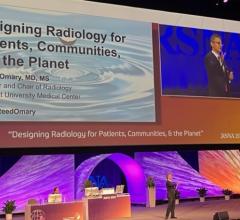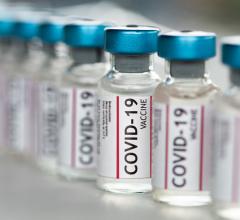
The U.S. Department of Health and Human Services (HHS) has released a National Cancer Plan, developed by the National Institutes of Health’s (NIH) National Cancer Institute (NCI). The plan provides a framework for everyone — across the federal government and all of society — to collaborate in ending cancer as we know it, and to realize the vision laid out by President Joe Biden and First Lady Jill Biden’s Cancer Moonshot. As such a significant portion of the Plan’s goals and strategies directly impact and are impacted by the medical imaging community, Imaging Technology News is offering a summary with key excerpts here.
April 13, 2023 — The U.S. Department of Health and Human Services (HHS) has released a National Cancer Plan, developed by the National Institutes of Health’s (NIH) National Cancer Institute (NCI). The plan provides a framework for everyone — across the federal government and all of society — to collaborate in ending cancer as we know it, and to realize the vision laid out by President Joe Biden and First Lady Jill Biden’s Cancer Moonshot.
As a significant portion of the Plan’s goals and strategies directly impact and are impacted by the medical imaging community, Imaging Technology News (ITN/www.itnlone.com) is offering a summary with key excerpts here.
“The President’s Cancer Moonshot has galvanized the goal of advancing the fight against cancer,” said Monica M. Bertagnolli, M.D., Director of the National Cancer Institute in an April 3 HHS statement on the plan. “The National Cancer Plan is a vision and a roadmap for how we can make faster progress against this all-too-common disease. By working together, we can achieve the Cancer Moonshot goal of reducing the cancer death rate by 50% within 25 years.”
The National Cancer Plan was drafted by NCI and NIH, in collaboration with the Cancer Moonshot, HHS, and representatives from the cancer community, according to the HHS statement detailing the plan. The plan includes eight essential goals and accompanying strategies that outline what must be accomplished to prevent more cancers, reduce deaths from the disease, and improve the lives of everyone after a diagnosis with cancer. The eight goals support the ambitious, achievable goals set by the reignited Cancer Moonshot to reduce the cancer death rate by at least half within 25 years and to improve the cancer patient and family experience.
The National Cancer Act of 1971 recognized the need for a national commitment to making progress against cancer and dedicated the federal government to developing a large-scale, world-class cancer research enterprise. (i)
The Plan’s overview provides a quick glance at key priorities behind its development and distribution, in which authors offer this summary: “With the vision and charge of the Cancer Moonshot,” wrote the authors, “We now present a new road map—a comprehensive National Cancer Plan—to advance the National Cancer Program, acknowledging that more than ever before, we have aa great opportunity … as a result of recent advances in the knowledge of this dread disease to conduct energetically a national program against cancer’ (ii) and to demonstrate international leadership in this truly global challenge. To achieve its goals, the National Cancer Plan provides a framework for collaboration across the National Cancer Program that will provide the American people the full benefit of each partner's contribution. Its three key elements include goals, strategies and a call to action.”
Goals
1. Prevent Cancer: All people and society adopt proven strategies that reduce the risk of cancer.
2. Detect Cancers Early: Cancers are detected and treated at early stages, enabling more effective treatment and reducing morbidity and mortality.
3. Develop Effective Treatments: Effective treatment, with minimal side effects, is accessible to all people with all cancers, including those with rare cancers, metastatic cancers, and treatment resistant disease.
4. Eliminate Inequities: Disparities in cancer risk factors, incidence, treatment side effects, and mortality are eliminated through equitable access to prevention, screening, treatment, and survivorship care.
5. Deliver Optimal Care: The health care system delivers to all people evidence-based, patient-centered care that prioritizes prevention, reduces cancer morbidity and mortality, and improves the lives of cancer survivors, including people living with cancer.
6. Engage Every Person: Every person with cancer or at risk for cancer has an opportunity to participate in research or otherwise contribute to the collective knowledge base, and barriers to their participation are eliminated.
7. Maximize Data Utility: Secure sharing of privacy-protected health data is standard practice throughout research, and researchers share and use available data to achieve rapid progress against cancer.
8. Optimize the Workforce: The cancer care and research workforce is diverse, reflects the communities served, and meets the needs of all people with cancer and those at risk for cancer, ensuring they live longer and healthier lives.
Strategies
Focusing on the need to detect cancers early, the Plan reinforced the importance of cancers being detected and treated at early stages, enabling more effective treatment, and reducing morbidity and mortality. It identified the following six strategies to that end, which include:
- Developing new methods to detect cancers, particularly for those cancers where no effective screening tests currently exist
- Developing novel imaging technologies for early cancer detection for use alone or in combination with other tests
- Developing methods to identify precancerous cells and eliminate them while minimizing side effects
- Conducting rigorous clinical trials to capture evidence about the benefits and harms of novel cancer detection tests
- Developing research partnerships that include primary care providers, researchers, and communities at increased risk for cancer to improve the testing and adoption of effective cancer screening
- Conducting research to identify and overcome barriers to the treatment of early-stage cancers in communities with disparities, including financial toxicity and policies that limit effective system-level and community-sourced patient navigation services
The plan emphasized the importance and urgency of identifying cancer early, and offered the following on those efforts, shared in the following excerpt:
Finding cancer in its earliest stages, when it is most treatable, can reduce the number of people who die from cancer. Currently, however, only a handful of cancer screening tests are known to reduce the chance that people regularly receiving screening will die from the screened cancer and for which the benefits of screening outweigh the harms. Those include 1) mammography for breast cancer 2) HPV and Pap tests for cervical cancer 3) colonoscopy, sigmoidoscopy, and stool-based tests for colorectal cancer, and 4) low-dose CT scans for lung cancer.
Screening rates for some of these successful tests are suboptimal, note the authors. Unfortunately, people's access to and use of screening can be affected by numerous social determinants of health, including where they live, whether they have health insurance, and whether they have access to transportation, among others. In addition, there are no proven screening tests for nearly all other cancers, including those with high mortality, such as pancreatic, ovarian, and brain cancer. As a result, these cancers are often diagnosed based on symptoms, by which time they are often advanced and far more challenging to treat. Once cancer is detected, it must be successfully treated. Although there have been tremendous advances in treatment, far too many cancers are diagnosed late when treatment is less likely to be effective.
The plan’s authors put forth that a better understanding of the reasons for disparities in rates of early detection of cancer across subpopulations is warranted. Also important, they add, is developing ways to screen for and effectively treat cancers for which mortality rates remain high. New technologies under development can detect circulating tumor cells, tumor DNA, and other substances in the blood that indicate the presence of many types of cancer.
Examples of NCI Research toward achieving this goal were provided in the Plan. It noted that NCI supports studies and initiatives to develop new cancer screening tests and evaluate tests already far along the development continuum. For example, the Tomosynthesis Mammographic Imaging Screening Trial compares two types of Food and Drug Administration–approved digital mammograms to identify the best method for breast cancer screening. In collaboration with industry partners, NCI-funded researchers are also developing trials to understand the net benefit of MCD assays.
NCI also fosters innovation in early-stage cancer detection by supporting technology development by U.S. small businesses. Through the Cancer Moonshot and other programs, NCI drives efforts at the community level to improve how screening is performed, developing more acceptable and convenient ways of screening that increase screening rates in populations for which they have historically been low. These studies also include approaches to ensure that those who get screened receive the appropriate follow-up, including affordable treatment, if they have a positive result.
Call to Action
Leveraging the Plan and its comprehensive strategies and initiatives, the authors concluded with the following call to action, offering this commentary: “To succeed in ending cancer as we know it, we must apply the knowledge gained through research at many levels throughout our complex society. Because of this, the National Cancer Plan is not solely focused on research but is a framework that promotes collaboration among all stakeholders that is required to ensure that every person with cancer lives a full and active life and that most people never have to face the challenge of a cancer diagnosis. With the National Cancer Plan, we will accelerate progress through collaborations that leverage all available resources and sustain communication between all partners to share knowledge gained and continuously update goals as we achieve progress. NCI stands ready to work with partners across the federal government and beyond to accomplish more together than we can separately. People with cancer are counting on us.”
For more information: https://nationalcancerplan.cancer.gov/
References:
i https://www.cancer.gov/news-events/nca50/commemorate-national-cancer-ac… ii The National Cancer Act of 1971. Public Law 92-218; 92nd Congress S. 1828; December 23, 197


 June 27, 2024
June 27, 2024 








